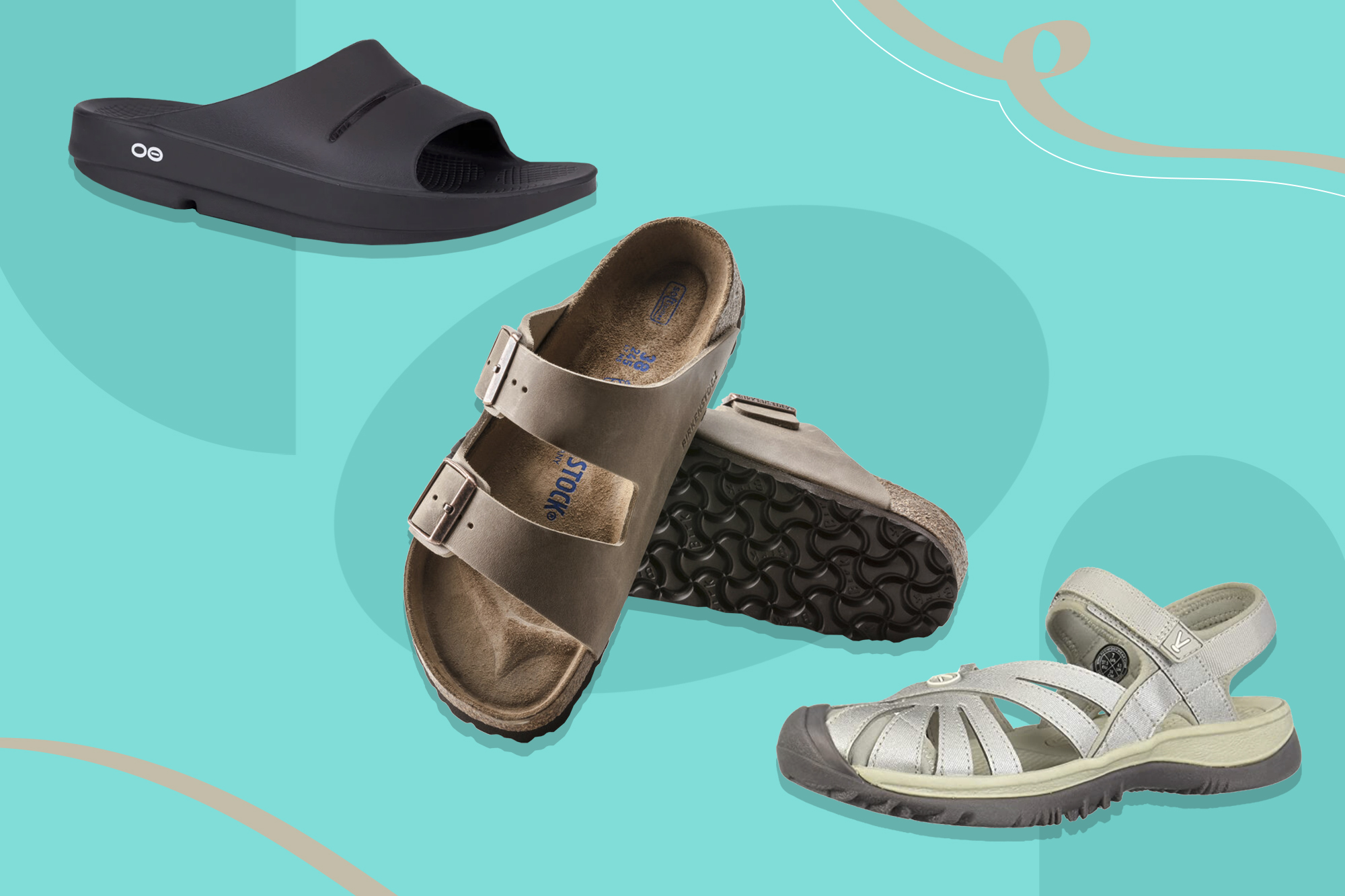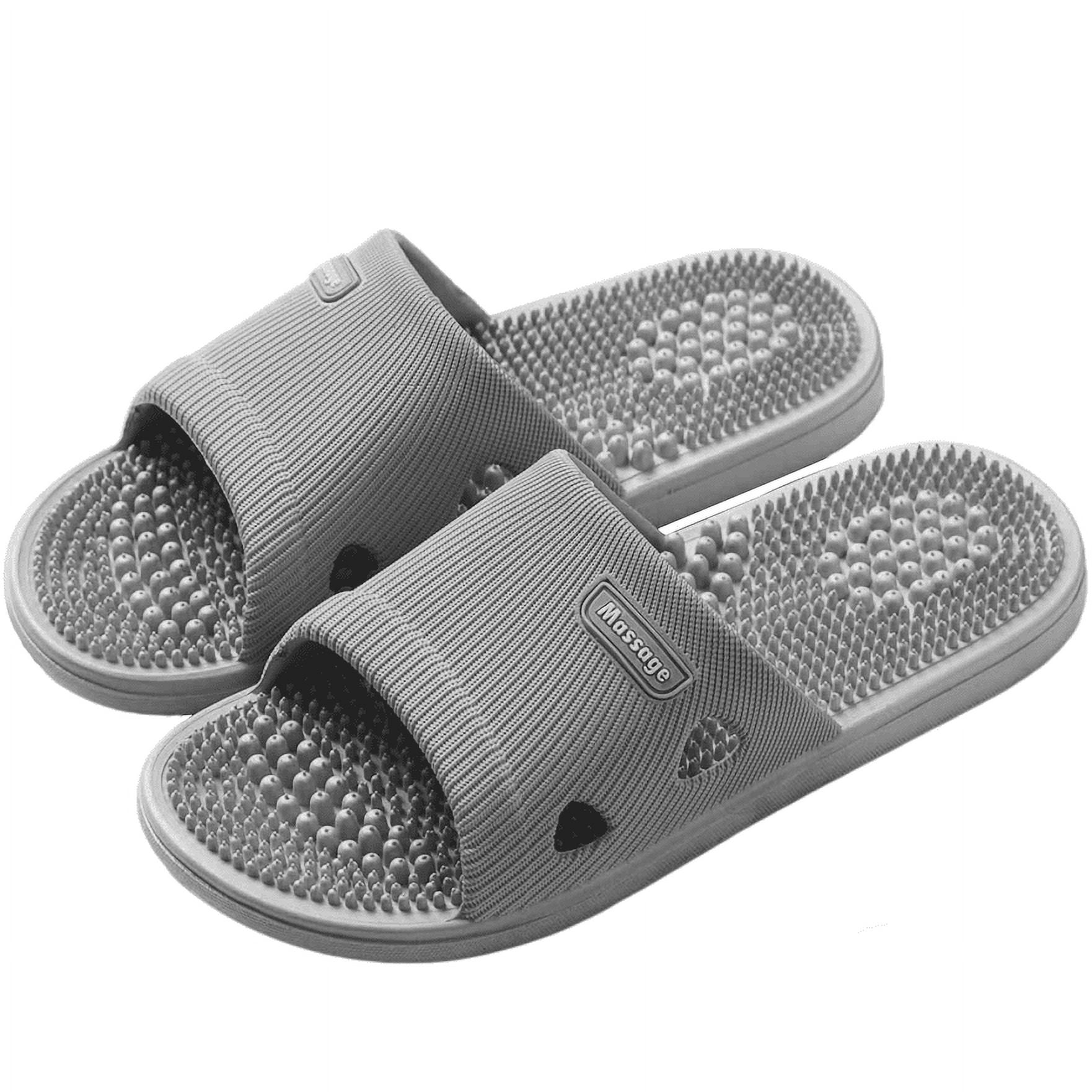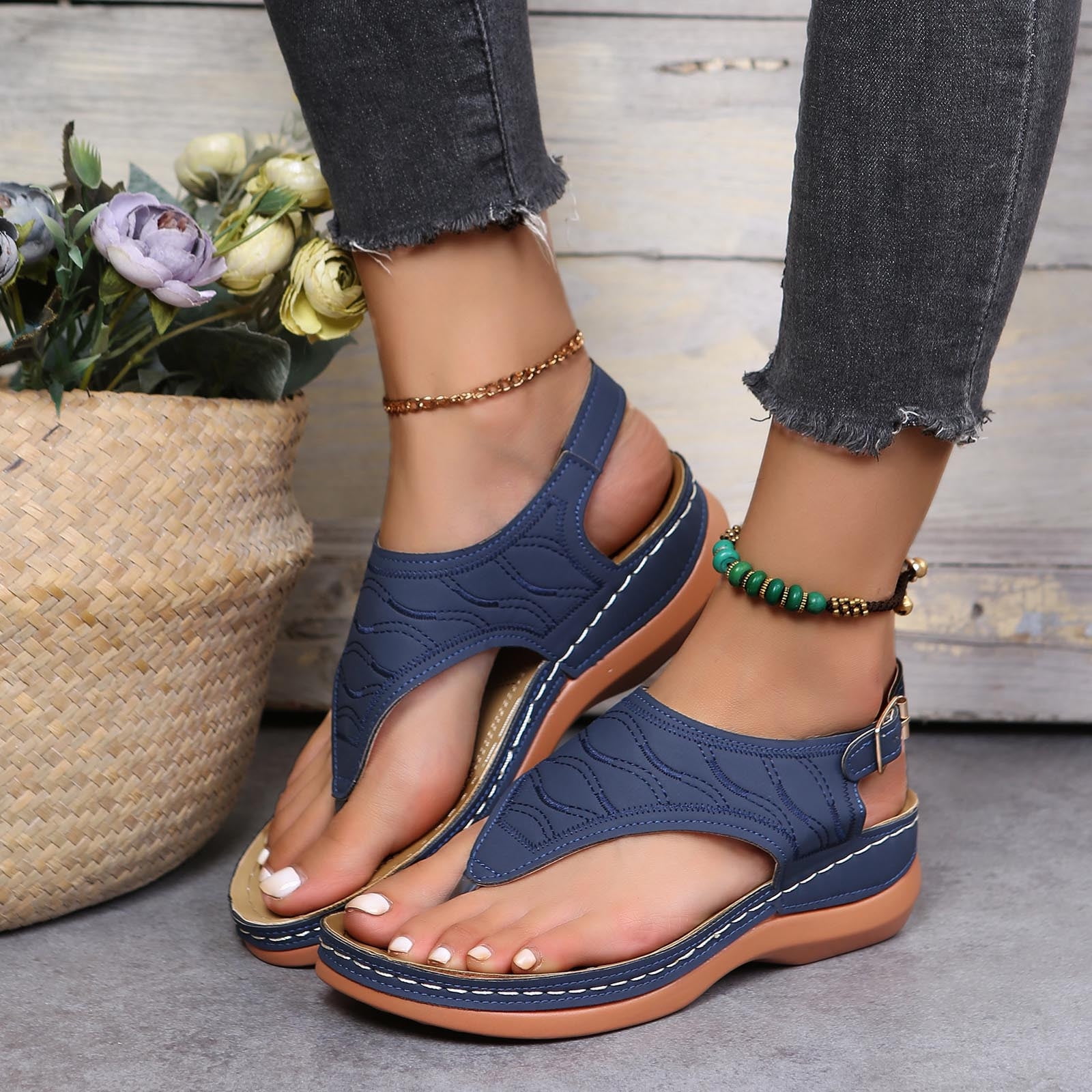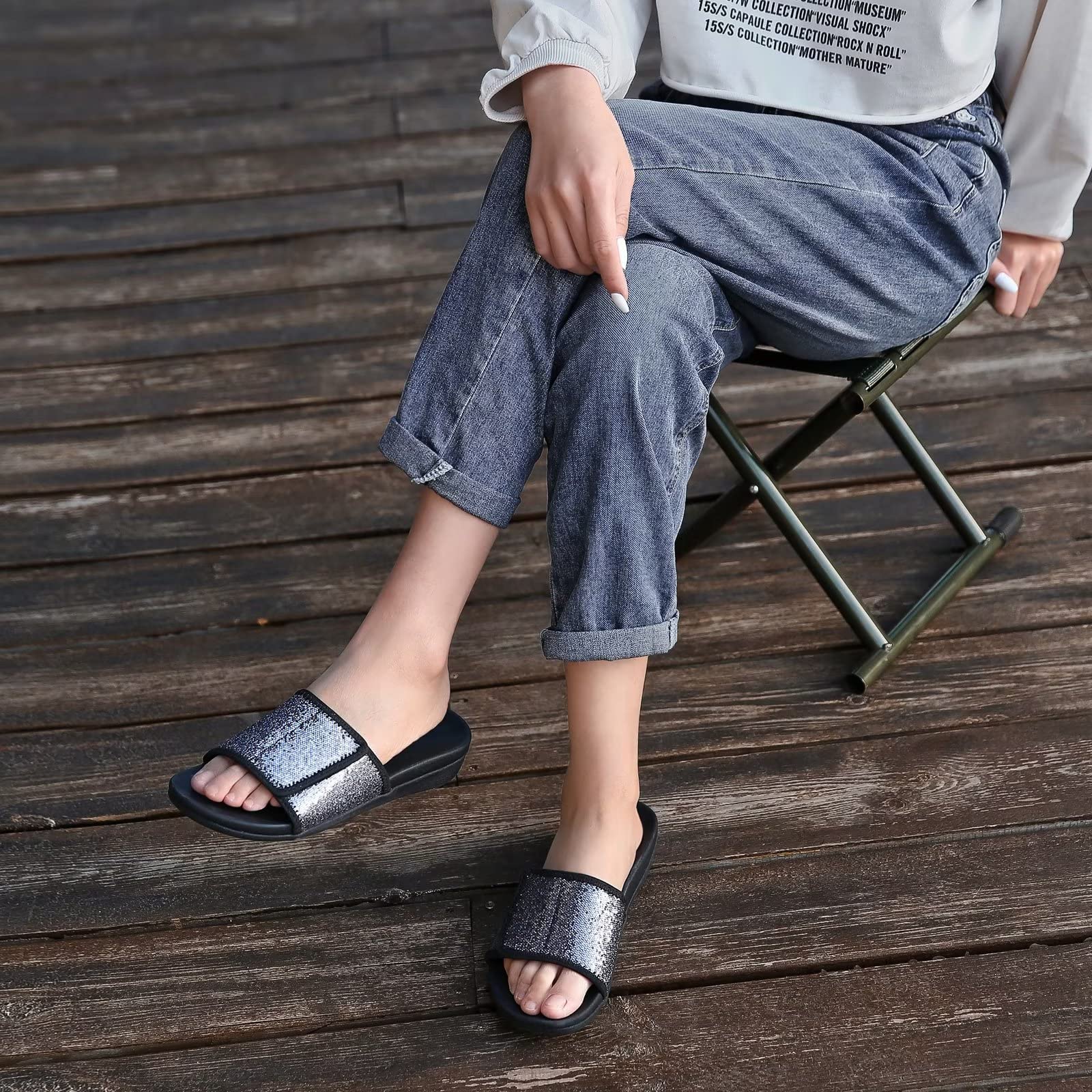Introduction
Plantar fasciitis slippers women’s, a common condition characterized by intense heel pain, affects millions of women worldwide, often disrupting daily activities and stealing away peaceful nights. The quest for relief leads many to seek out specialized footwear that can alleviate discomfort and support recovery. Enter plantar fasciitis slippers—thoughtfully designed footwear that combines the coziness of slippers with therapeutic features aimed at soothing aching feet.

Understanding Plantar Fasciitis
Before delving into the wonders of these specialized slippers, it’s crucial to understand the root of the problem. Plantar fasciitis occurs when the thick band of tissue connecting the heel bone to the toes (the plantar fascia) becomes inflamed, typically due to overuse, improper footwear, or structural foot issues. Morning steps can be particularly painful, as the tissue tightens overnight, causing that first step out of bed to feel like walking on needles.
Key Features of Plantar Fasciitis Slippers for Women
When shopping for slippers to address plantar fasciitis, look for these essential features:
- Arch Support: Proper arch support is paramount to distribute weight evenly and reduce strain on the plantar fascia. Look for contoured footbeds designed to cradle the natural shape of your foot, offering customized support.
- Deep Heel Cup: A deep heel cup helps stabilize the heel, keeping it in a neutral position and absorbing shock with each step. This alignment is vital for minimizing tension on the fascia.
- Soft, Cushioned Sole: Shock-absorbing soles made from memory foam or gel materials soften impacts and provide additional comfort, especially on hard floors.
- Adjustable Fit: Slippers with adjustable straps or wide openings ensure a personalized fit that accommodates swelling or different foot widths, without compromising support.
- Breathable Materials: Breathability is key to preventing moisture buildup and reducing the risk of fungal infections. Materials like mesh or breathable linings keep feet dry and comfortable.
- Firm Yet Flexible Sole: While cushioning is important, a sole that is too soft can exacerbate the problem. Seek a balance between flexibility for natural movement and firmness for adequate support.
Top Picks for Women’s Plantar Fasciitis Slippers
With these criteria in mind, several brands have risen to the challenge, crafting slippers that tick all the boxes for women seeking respite from plantar fasciitis pain:
- Vionic: Known for their podiatrist-designed footwear, Vionic offers slippers with Orthaheel technology, featuring excellent arch support and a deep heel cup.
- Orthofeet: Specializing in orthopedic shoes, Orthofeet slippers boast extra cushioning, adjustable straps, and a wide toe box for those who need additional room.
- Teva: Teva’s Mush II flip-flop slippers, while minimalist in design, provide excellent arch support and a soft, cushioned footbed, perfect for warmer climates or at-home wear.
- Skechers: Skechers’ Go Walk Joy line incorporates their signature Air-Cooled Goga Mat insole, providing excellent comfort and support in a slip-on design.
Making the Right Choice
Selecting the right pair of slippers is a personal journey that requires considering your specific needs, lifestyle, and the severity of your plantar fasciitis. It’s advisable to try on slippers later in the day when feet tend to swell, ensuring a comfortable fit throughout the day. Additionally, gradual transition into wearing supportive footwear, including slippers, and incorporating stretches and exercises recommended by a healthcare professional can further enhance recovery.
Additional Tips for Managing Plantar Fasciitis with Slippers
While selecting the appropriate slippers is a significant step towards managing plantar fasciitis, integrating other strategies can significantly enhance your recovery process and overall foot health:
- Warm-Up Exercises: Before stepping out of bed, perform gentle stretching exercises to loosen up the plantar fascia and Achilles tendon. Simple actions like flexing and pointing your feet or doing towel curls (using a towel to pull your foot towards you) can make a big difference.
- Night Splints: Consider using a night splint, especially if you experience severe morning pain. These devices maintain a gentle stretch on the calf and plantar fascia while you sleep, reducing morning stiffness.
- Weight Management: Excess weight puts added pressure on your feet, exacerbating plantar fasciitis. Maintaining a healthy weight through balanced nutrition and regular exercise (low-impact activities like swimming or cycling) can alleviate symptoms.
- Shoe Choices Beyond Slippers: Ensure all footwear, not just your slippers, offer good arch support and cushioning. Avoid high heels and flip flops which lack support and may worsen your condition.
- Custom Orthotics: If over-the-counter slippers do not provide sufficient relief, consult a podiatrist about custom orthotics. Tailored to your foot’s unique structure, they can significantly improve support and comfort.
- Regular Foot Massage: Massaging the bottom of your feet with a tennis ball or massage roller can help release tension in the plantar fascia and promote blood flow.
- Stay Hydrated and Stretch Frequently: Adequate hydration aids in tissue repair and maintaining flexibility. Incorporate daily stretching routines targeting your calves, Achilles, and plantar fascia to improve flexibility and reduce tightness.
- Be Patient and Persistent: Healing from plantar fasciitis can take time, often several months. Consistently wearing supportive slippers and adhering to a comprehensive management plan is key to a successful recovery.
By combining the right footwear with these supplementary measures, you can effectively manage plantar fasciitis and regain your active lifestyle. Remember, it’s crucial to listen to your body, respond to its signals, and seek professional guidance when necessary. With patience, persistence, and the right tools, relief is within reach.
Creating a Healing Environment at Home
Your living space can also contribute to your foot health recovery. Keep your home’s flooring clean and clear of clutter to minimize tripping hazards and ensure a smooth walking surface. Using rugs with non-slip backing in high-traffic areas can provide additional cushioning and safety.
Lastly, remember that healing from plantar fasciitis is a process that requires patience and consistency. Incorporating supportive slippers into your daily routine, along with other management strategies, forms a comprehensive approach to tackling this condition. By prioritizing your foot health, you’re investing in a more comfortable and active future, one step at a time.
Conclusion
Remember, investing in a quality pair of plantar fasciitis slippers is not just a purchase; it’s a commitment to your foot health and overall wellbeing. With the right support, you can take each step confidently, turning everyday comfort into a reality rather than a distant dream.



